I know some of you know everything. But some of us can use all the help we can get. Here is an article I wrote for The Fisherman Magazine many years ago. Its now a part of a current eBook, ” Interviews with Experts” available on Amazon. But that is not important. What I am hoping is that at least helps one reader decipher the secrets of Western Sound or any back bay waters and increase your catch ratio
Interview with an expert: Mike Lang – April
This is a first in a series of monthly interviews with some of Long Island best surfcasters on how they get ready for the month ahead. What goes thru their minds in anticipation, what is their plan of action and of course where do they fish that particular month and why .My first victim is Mike Lang from Farragut Striper Club. Mike has won the NY Surf Fishing Contest an unprecedented 6 consecutive times.
In the past you have had great success during the month of April. Where do you concentrate your efforts and why?
As April approaches, the main areas that I concentrate on are all in the western Long Island sound in bodies of water such as Hempstead harbor, Manhasset and Little Neck Bay’s. One reason why I concentrate on these areas is that there is a definite population of stripers that winter over here which take full advantage of the many deep water holes and shipping lanes that lie right outside these harbor and bay areas. I target these western bays for two main reasons, first because they each possess flats of mud and sand which are the very first parts of the bay to warm up on those sunny April days, which draw these holdovers from their depths in search of food. And second, these flats, for the most part, are bordered by either mussel beds or glacial boulder fields, both of which provide a terrific menu for these early spring stripers. This menu of bait includes mussels, steamer and razor clams, crabs, sea worms, grass shrimp, killie, spearing and best of all the early season schools of herring and bunker.
Before the annual migration of Hudson river stripers make their way into these bays, usually around the third week of April (depending on the water temps), the targets for me are the holdovers, which for many early weeks provide great action with a typical outing providing quality over quantity; many of these early bass are in the 10 to 30 lb. range. Normally I can expect to get about 2-4 weeks of this fishery before a slight lull, then on the next moon there is a resurgence of new bass, most of which are Hudson River bass migrating into these very same bays. Now there can normally be another month or more of steady and consistent action with daytime schoolies to the night time cows, and all within a simple 10 to 30 minute car ride, which for me is yet another reason I have targeted these waters for over 24 years.
When it comes to early season action, does the time of day influence ones success?
Yes for the most part. While searching for quantity over quality, you are best to fish the daytime tides. A couple of consecutive sunny days will warm up the various mud flats, which is important to get things going. When searching for quality over quantity, one is better to fish the night tides of the early spring. The larger bass use the cover of night to provide additional security, which in the western sound is even more important as these bays are relatively shallow.
Is there a particular pattern when it comes to the weather you prefer to do your fishing in during the month of April?
For daytime schoolie action, I like to fish the last few hours of incoming through the first couple of the outgoing. Occasionally I like to fish the exact opposite as the water gets to warm up more, to find that magic couple of hours where the bite can often yield 50-100 schoolie on a single tide. I think if I were to put together a weather/tide/moon situation that I would be very ready and eager to put in some serious time, I would prefer the nights around a new moon with the beginning of a gentle southwest wind at dead low tide. I will totally stay away from most of my key areas when the wind has been mostly out of the north, blowing over 15 MPH for an extended period of time, especially and in particular the Northwest or “Northworst” winds. These winds whip across the sound right into these fairly shallow, muddy bays, and the water quickly goes from reasonably unstained to an downright coffee color within hours, which is some of the most unproductive water and wind conditions for these general areas.
As far as winds are concerned, my preferred wind would be a southwest; this wind tends to settle the shallow bay areas where I like to concentrate my efforts. This settled water is very placid and clean; late night tides of these conditions are essential for me to eliminate water, in that I mean these calm waters allow me to see and hear where the fish are feeding, as well as simply finding the schools of bait where I can maximize my odds to at landing more fish.
Tell me about your approach to lure selection. What influences you to pick a particular lure design and why?
The water temperature and time of season both play a part in my personal schedule of plug choice. As both the water and season start out early on, say late March, early April, with water temps in the low to mid 40s, the bass are very lethargic and I mostly use soft rubber baits such as paddle tail shad bodies and curly tail grubs, both used with lead heads that are sometimes literally dragged along the muddy bottom in order to provoke a hit. As the weeks progress, and the water temperatures warm through the mid to upper 40s, I can move on up to 4-6 inch swimming plugs. My primary “go to” plugs are Mambo Minnows and Redfins. Very often, color and size as well as custom alterations are critical to success, which in itself are relative. Success early on, for some, could be a dozen or so bass on a tide, for others it might be 50-100 bass for the day. I had days where side by side with a friend, we both fished the very same size and color Redfin; in fact both were chicken scratch bombers. One of us was out-fishing the other six to one, because of one critical difference: one of us had loaded his with 3 cc’s of oil. I hardly ever use teasers. As the weeks progress, the size of my plugs progress as well, from 4 and 5 inch bombers to 6-7 inch Redfins and Mambos and similar sized dark colored metal lipped swimmers. As with any plug fishing that I do, I use a very, very slow retrieve, frequently mixing it up with some sudden stops or subtle jerks during the retrieve. My plug choice and size is in direct correlation to the many different types of bait of early spring such as spearing, herring, and bunker. As the bait patterns change, I tend to concentrate on the larger size plugs in an effort to target larger bass. Once I catch the first good fish on a plug, a bass of 10-15 lbs. I will then switch totally over to fishing at night, and then 75 percent of the time I will fish bait, as this is the time when the bunker are visible and the first large of the year will be beached in the 20-40 lb. range. Over all of the years of targeting bass in these particular bays one thing is very apparent; big bass really want bait. On many occasions I have had my plug offering right in the middle of a midnight melee, while large bass corralled bunker all around me, only for my plug to go unmolested. Once switching over to fresh chunks I have had these very same nights that were thus far unproductive, turn into trophy nights scoring multiple large bass right away.
Any last words of advice?
I would say that early on, while plugging, keep retrieves very slow and steady. As the season progresses keep an eye out for bait and try to match the size. If you find bait, work the edges of the school methodically and throughout the water column from top water metal lipped swimmers to bottom dwelling lead head paddle tails and bucktails in the 1/4-3/4 oz. sizes. Don’t be afraid of low tides, they can sometimes be beneficial in the fact that the low tide can enable you to walk amongst feeding fish. While chunking, find the bunker schools and you’ll find the bass. My best suggestion to everyone looking to cash in on this excellent fishery is to plan your hunt and hunt your plan. I also suggest everyone to keep a very detailed log book, whether or not you catch fish that particular night, the practice of keeping a detailed log will help you determine the best combination of conditions such as day/night/tide/wind/moon/bait etc. that will then put you into the best situation by which to catch the most fish.
in the news department, a very special show coming up in May

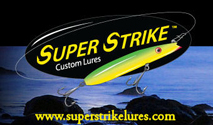

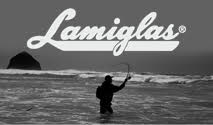


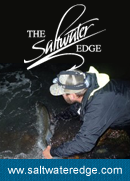
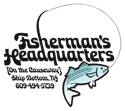


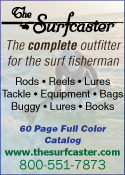


Good stuff Mike! Been out there many of nights in April with big bass on bunker and just as you said I could not get them to take a plug. Should I go to the dark side of chunkin? Hee hee! v ery good read!
↓thks
↓Nice read
↓I hate using chunks, but have a fondness for Chunkers. A few years ago I was fishing with two club members at a North Shore location. I was using plugs of course & they were throwing chunks. (argh) On my 4th cast I managed a 5lb schoolie. Now I began to give it to these two Youngins. “You may be good in bed but your no good on the beach” along with You youngsters can F—, but you can’t fish”. I was really giving it to them. Soon afterwards as the sun was beginning to set, their rods started to go. The took 8 bass between 20-38lbs, all on Chunks. I was doing nothing. Now it was my turn in the barrel. ” Vito, do you want some viagra” Old guys should be in Nursing Homes and not on the beach”. I was laughing so hard I had to walk down the beach to escape their rath. Moral of this the story is that I really love Chunkers. When a person throws a chunk that is one less person plugging. As my mindset you goes, For every Chunker there is a happy Plugger that is because now There Is One Less Plug In The Rip.
Good Luck all you chunkers and may your Sand Spikes be Shinny.
Vito
↓You are the best……and the ORIGINAL chunker
↓“The pen is mightier than the rod.” (M. Sarro) BJ
↓Great article! It is now filed for future reference.
↓Vito’s post is a bonus.
Note to self; “If I have success chunking, do not boast about it here”, lol.
Well Done! Makes want to start throwing more bait but I hate it!!! I know I am missing out.
↓Thanks for this article, i’ll be revisiting the details here again. And Vito’s post is hilarious! Haha–
↓